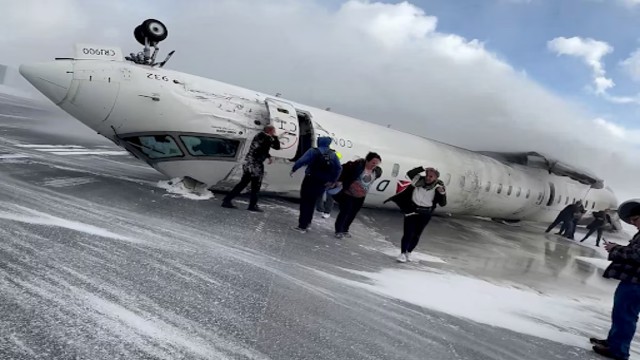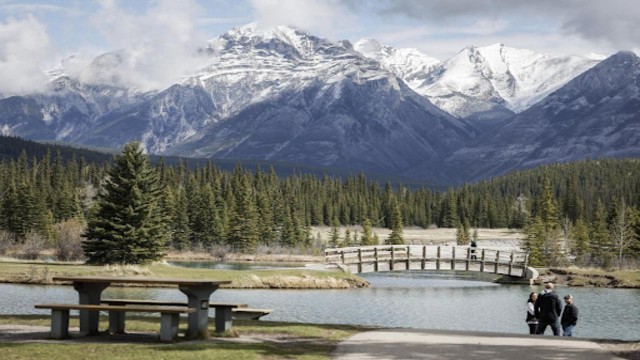
Passengers exit a Delta Air Lines CRJ-900 jet after it crash-landed at Toronto Pearson Airport on February 17, 2025, as seen in a video still. REUTERS
A recent investigation revealed that the Delta Air Lines plane, which crash-landed at Toronto Pearson Airport in February, descended too fast and tilted right before the landing gear collapsed. The plane then skidded and caught fire. Canada’s transportation safety board released a preliminary report but did not draw any firm conclusions, saying the investigation is still ongoing.
The crash occurred on February 17 when Delta Flight 4819, operated by Endeavor Air, came in at an unsafe descent rate of 1,110 feet per minute—far higher than the 720 feet per minute the landing gear could handle. The Bombardier-made Mitsubishi CRJ900 jet landed with its nose slightly tilted upward, but its airspeed of 134 knots was slower than the recommended 149 knots.
Just 2.6 seconds before the plane hit the ground, a cockpit alarm warned the pilots of the dangerously high descent rate. Despite the warning, the plane landed hard, causing the landing gear to fail. The aircraft lost a wing and its tail before coming to a stop upside down.
The crash left 21 people injured, who were treated at the hospital. Thankfully, no one died.
Weather conditions at the time were challenging but not extreme. The temperature was -9°C with wind gusts of up to 35 knots. The runway had been plowed before the incident. Aviation expert David McNair noted that while the weather was rough, it was manageable.
The flight was being handled by the first officer, who had 1,422 hours of flight experience and had been with the airline for 13 months. The captain, seated next to him, was monitoring the flight. He had been with the airline since 2007, logging 3,570 hours of flying time.
McNair believes the first officer's experience was adequate but stressed that experience doesn’t always mean skill. He also pointed out that the crew's slow airspeed on landing was a major factor in the crash.
The report also described the chaotic evacuation. Some passengers grabbed their carry-on bags while fleeing. One passenger ripped off a broken washroom door to clear a path for a flight attendant. Many passengers were drenched in jet fuel and covered with fire retardant by rescue teams. The cockpit door jammed, forcing the pilots to escape through an emergency ceiling hatch.
Some passengers struggled to unbuckle their safety belts while upside down. When they managed to release them, they fell onto the ceiling, causing additional injuries.
Several passengers have since filed lawsuits in the U.S. against Delta and its Endeavor subsidiary. The lawsuits claim the crew acted recklessly and failed to follow basic landing procedures. The suits seek damages for the physical and emotional suffering caused by the crash.
Delta and Endeavor declined to comment on the legal action. However, they stated that ensuring the safety of their passengers and employees remains their top priority.















